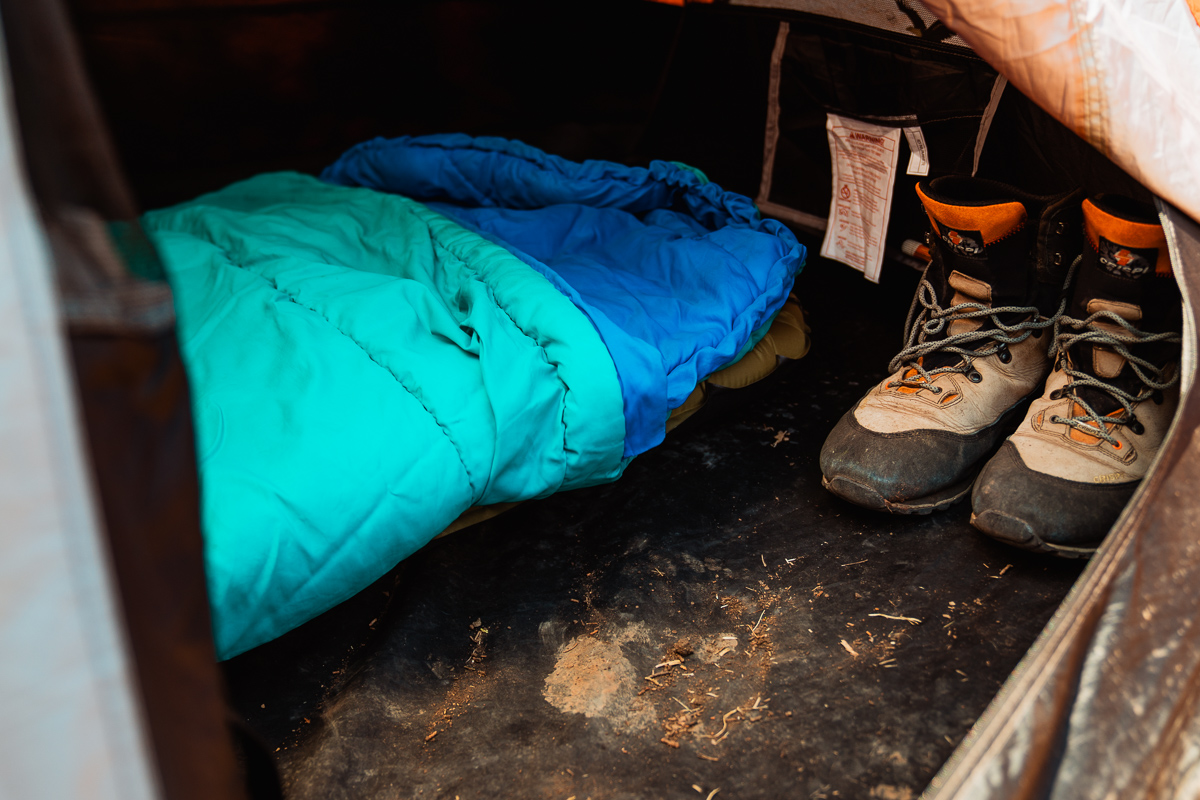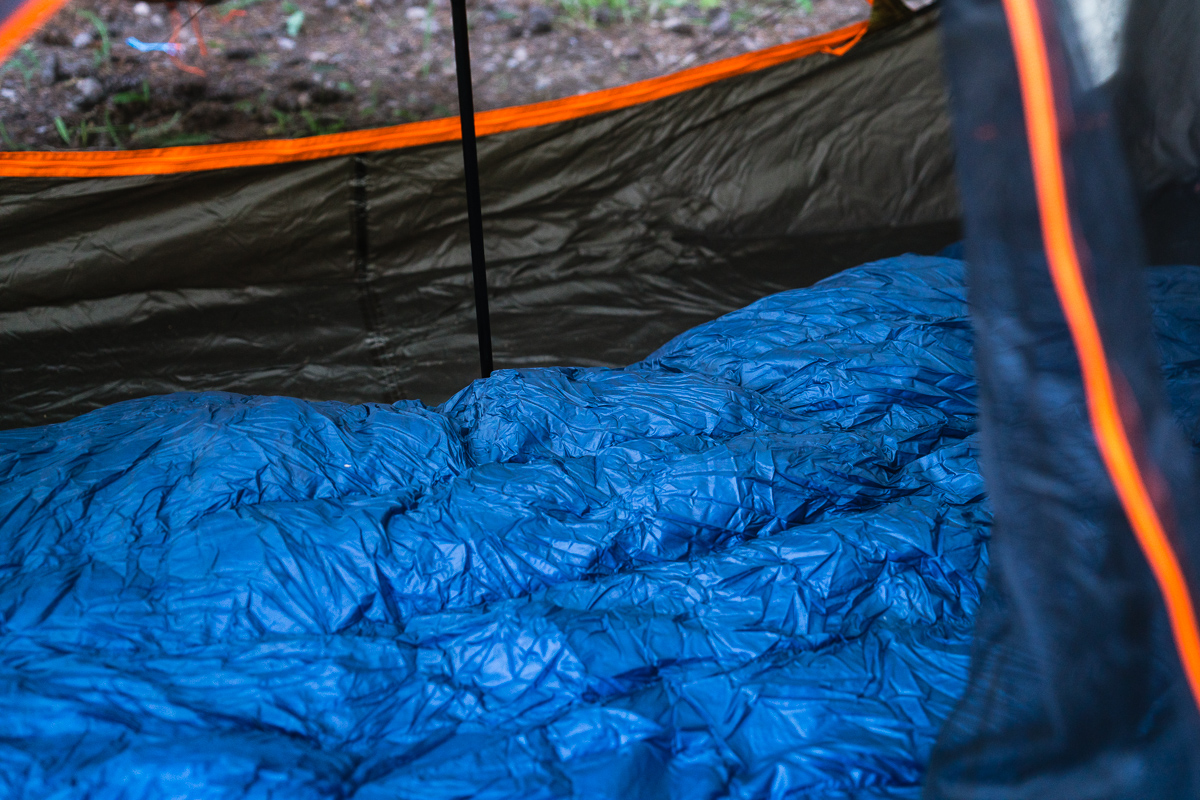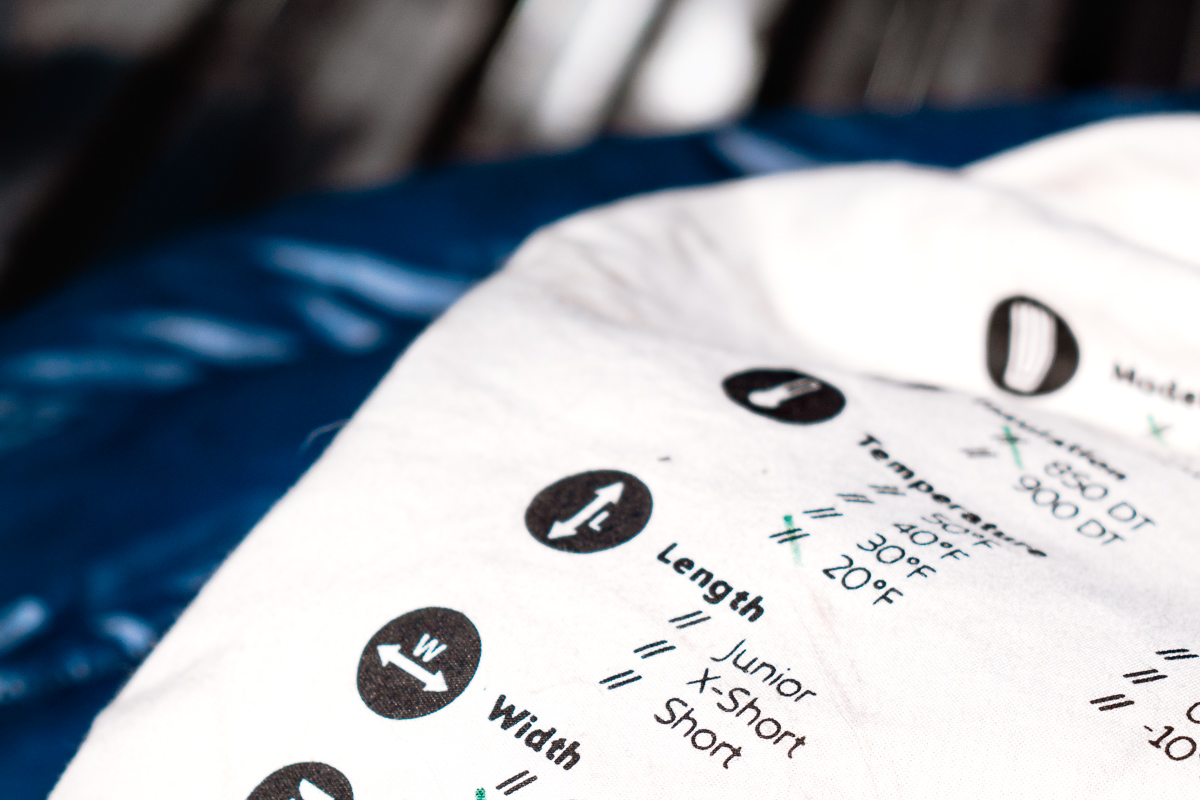
Backpack Hunter's Guide to Sleeping Bag Selection
By Josh Kirchner
Sleeping Bags have come way more than a skip and a jump from the days of old. My first sleeping bag was an old school Coleman that probably weighed like 5-6 pounds or so. There was no way that thing was fitting inside of a backpack and I remember seeing folks strap them to the outside of frame packs long ago. These days, sleeping bags are more lightweight and efficient than they've ever been. Whether you're going on an early season high country mule deer hunt or trudging into the backcountry on a cold November elk hunt, there is a sleeping bag with your name on it. With that being said, there are definitely a lot of options out there, as well as some things to consider when choosing a sleeping bag.
1. Down vs. Synthetic
Right from the get go the type of insulation within sleeping bags is something to pay attention to. There are pros and cons to both ends of the spectrum, but each have their place. This is really going to come down to what works best for you, your system, and the conditions you hunt in. The two options you'll have are down insulation and synthetic insulation.
Synthetic
Synthetic insulation is some pretty neat stuff, and even comes with a price tag that won't make you choke on your breakfast. One of the values in synthetic insulation is that it will retain insulating properties even when wet. That's a huge plus for folks hunting in moisture rich environments. And if one does get their bag wet, it's going to dry fairly quick. Synthetic material is also very durable, which is beneficial on these rigorous backpacking adventures. Lastly, and something that kind of flies under the radar is that it's hypoallergenic.
There are a few downsides to synthetics as well. The first being the weight to warmth ratio. For the warmth one is getting, it takes a lot more to carry. Backpack hunting is strenuous and more folks are drifting towards ultralight materials to lighten the load in their packs. Synthetics don't really shine well there. It's also going to be fairly bulky. This is another downside. A sleeping bag taking up more room in a backpack means that less food can be carried in. In light of that, less days can be spent in the field. While synthetic is no doubt durable, it tends to be less durable over time than down. It'll actually lose insulation value through the years of stuffing it in a stuff sack.
Down
The other major player in the insulation category is down. Down is a marvelous material that is as good as it gets in terms of warmth to weight ratio. For an ultralight backpack hunter, down is the ticket. It also shines in being compressible. A person can really get their bags stuffed down small for packing purposes, which means they'll have more room for other things like food. And after all of that stuffing and packing, down is very durable in the long run. As long as one takes care of it(cleaning, etc.), this stuff can last a very long time and not lose it's insulating value. Down is also just plain comfortable.
Unlike synthetics, this down stuff comes with a price. And sadly, sometimes it's one that keeps folks from pulling the trigger. A high end down sleeping bag can range as much as $800 in the U.S. That's obviously at the extreme end of things, but the fact remains. Something else to consider is that down is pretty useless when it gets wet. Meaning that you'll be relying on your clothing and fire for a warm night, instead of your sleeping bag. Down also takes a really long time to dry out. There is water resistant down fill, but it is just that, and nothing further. Cleaning down is another downside, as it requires special attention. There is a process to it that just might not be worth it to some folks.
Down Fill Weight
As one is looking at down sleeping bags, you'll notice that each of them say something along the lines of "800 fill" or "900 fill." This is referring to the fill power of the down and how much loft it has, which is how it'll insulate your body heat. For instance, one ounce of 700 fill down will cover 700 cubic inches of space. The higher the fill rating, the less down is needed to achieve the same temperature rating. An example would be a 700 fill 30 degree bag is going to weigh more than a 900 fill 30 degree bag. Both achieve the same amount of warmth. One is just more efficient. The 900 will also be more compressible, due to less down filling.
2. Weight
Weight is always something on the minds of backpack hunters. Sleeping bags are a great way to cut that weight significantly, as well as open up space in your backpack. Bags can range anywhere from 5 lbs all the way down to mere ounces, so there really is something for everyone. The most ultralight option is no doubt going to be down sleeping bags with a high fill weight, like a 950 fill. The trade off for higher fill and lighter weight bag though will be a higher price. The opposite end of the spectrum would be a much more affordable synthetic bag. Which brings me to our next topic, Price.
3. Price
If you want an ultralight efficient bag that isn't going to take up a bunch of space in your backpack, then you're also going to pay for it. It sounds insane to an onlooker to spend these crazy amounts of money on something as petty as a sleeping bag, but if this is your thing, then you'll understand eventually. The more backpack hunting someone does, the more it makes sense to cut weight where they can. All of us have different budgets though, so get the best bag that you personally can afford. Don't think that you NEED a $500 sleeping bag to go backpack hunting, because that's just silly. They are no doubt more efficient in the warmth department, but that doesn't mean the more affordable bags don't work. It just means the more expensive ones work better. Most importantly, get something that will get you into the field and then upgrade in the future if you'd like.
4. Temperature Rating
Another thing you'll notice on each of these bags is a temperature rating. Sleeping bags come in a wide variety of temperature ratings from 40 degrees all the way down below 0 degrees. What temperature rating to go with is something that should reflect the temps you're hunting in MOST of the time. There is no reason to have a 0 degree bag if 30 degrees is what you're mostly hunting/sleeping in. At that point, you are just carrying unnecessary weight. Go with something that will cover you for the coldest temps you're most likely to encounter on a regular basis. Also, there are ways to manipulate that temperature rating by adding liners and wearing more clothing to bed.
Something that needs to be pointed out about temperature ratings is that most of the ones you'll see are a survival rating, not a comfort rating. Meaning that the bag will keep you alive to the rating, but you might not necessarily be comfortable. Depedning on the brand, you may want to add on 10 degrees to the bag rating to understand what the comfort rating is. So, a 20 degree bag will be comfortable down to 30 degrees, but keep you alive down to 20 degrees. Now, there are some companies that will actually advertise a comfort rating, so keep that in mind through your search, and make sure you know what they're advertising before you buy.
5. Bag Dimensions
Something that is oftentimes overlooked in sleeping bags is actually the dimensions and shape of the bag. This could bite you in the rear end if not paid attention to. If a bag isn't big enough for someone and it's actually tight fitting, that's a problem, especially with down. When you compress down, it loses it's insulating value. So, if the bag is too tight, and the fill is being compressed, then that is compromising the warmth of said bag. That could end in a long night of shivering. Take the time to actually look at the dimensions of the bags and then measure yourself if you have to. You won't regret it.
On the shape front, you'll notice that sleeping bags either come in mummy form or rectangle form. The mummy is going to be warmer no doubt, because it requires less space on the inside to heat up. It's more form fitting to the human body. However, not everyone likes that feeling of not being able to move around in there. Rectangle bags shine here, but will not be as efficient with keeping you warm. This is similar to a house. It's going to cost more money and time to heat up a bigger house, than a smaller one, simply because there is less space in the smaller one. The rectangle bag has more space to heat up, thus taking longer to do so.
To "Wrap it Up"
Even though there are a ton of different options out there for sleeping bags, it doesn't have to be a stressful endeavor acquiring one. It's merely a process like anything else. Take the time and do the research to find out what works best for you, your system, and the country you're hunting. Ask yourself what your goals are for a sleeping bag. Whether it's being super ultralight or maybe you're just looking for something to get started out there, these are things you need to know, and what will help with your decision making. I promise there is a bag out there for you and it'll be a far cry away from that old school Coleman I mentioned from my youth.
Top Tips for Buying a Bag
1. Buy the best bag you can afford
2. Pay extra attention to temperature ratings and ift hey are a comfort or survival rating
3. Go with a bag that reflects the environment and temperatures you hunt in most of the time